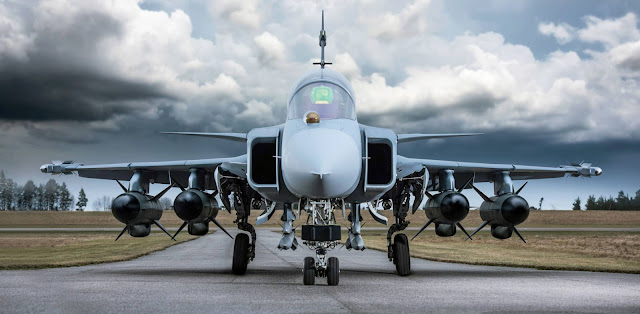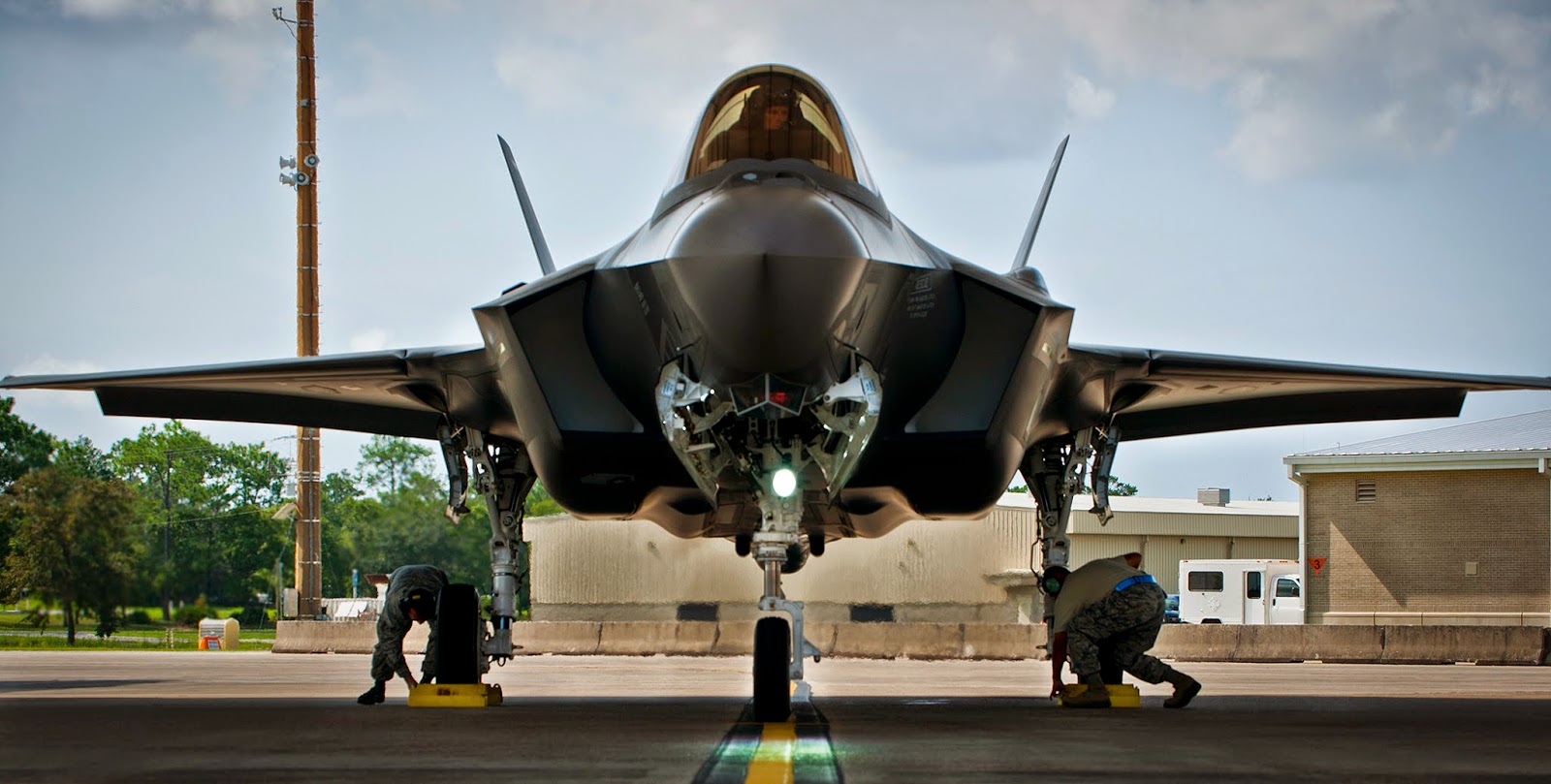China really wants to enter the jet fighter sales market.
 |
| Chengdu J-10A |
But the MiG-25 wasn't the biggest fighter threat of the Cold War. It was produced in relatively small numbers and it had a rather specialized role as an interceptor, meaning it wasn't a very good air-superiority fighter.
No, the biggest aerial threat during the Cold War was the MiG-21.
 |
| One of MANY MiG-21s |
Was the MiG-21 a good fighter? Not when compared to American F-16s and F-15s it wasn't. It had quite a short range, and its wasn't the most agile of fighters, limited to a mere 7gs with early models. It also quickly lost speed when making tight turns. But the MiG-21 was fast; capable of Mach 2 speeds. It was a light aircraft with lots of power and a fast rate of climb. It had a decent radar and it was capable of firing both radar guided BVR and infrared WVR missiles. It was simple to maintain and easy to fly. Best of all, it was cheap.
With almost 14,000 models built, about 2,400 of which were the Chinese J-7 variant, the MiG-21 is the most produced supersonic jet fighter of all time, It was pretty much standard issue to any communist nation, as well as finding its way into other countries' air forces as well. The MiG-21 was so predominant with potential enemy nations, the F-5 Freedom Fighter has been the choice of US "Aggressor" training squadrons thanks to its similarities to the MiG-21.
The MiG-21 proved so popular that it is still in use with many air forces today, despite its design being almost 60 years old. Heck, you can even pick up a decent used model for the price of a luxury car. You may even be able to find one on eBay.
So what will be the "MiG-21" for the 21st century?
China hopes it has the answer.
 |
| No... Not this one. |
For years China's aerospace industry has been dismissed for producing knock-offs of Russian designs, with a few uninspired indigenous designs. Lately, however, China has struck against its reputation, with some designs catching the rest of the world off guard. The stealthy J-20 isn't likely to be produced in large numbers, however, and its twin engines and stealth design certainly aren't likely to make it as easy to maintain as the MiG-21.
But China has another fighter, one that's offers impressive performance, single engine simplicity, and the potential to be built in large numbers.
 |
| New and improved J-10B. |
Starting production in 2002, the Chengdu J-10 "Vigorous Dragon" already had 270 models built and in use by the People's Liberation Army Air Force (PLAAF). That's more than the Dassault Rafale or the Saab Gripen, both of which entered production much sooner and both of which have been heavily marketed to foreign sales. The J-10, however, has been limited to Chinese use only, due to restrictions placed on its Russian sourced Lyulka-Saturn AL-31FN turbofan engine.
While there isn't a lot of specific performance information available on the J-10 yet, most indications point to performance akin to that of the F-16. It is capable of Mach 2.2, has a thrust-to-weight ratio of 1.024, can carry over 13,000lbs of ordinance, and it has a combat radius of 550km.
A new, improved version of the J-10, the J-10B, offers stealth improvements, a modern AESA radar, and other enhancements similar to other "4++ generation" fighters like the Super Hornet and Su-35. The biggest change, however, is the placement of a Chinese sourced Shenyang WS-10 Taihang engine. Chengdu has plans on building 1,200 J-10s for Chinese use, but the new engine will allow China to market the J-10B without restriction. Up to 36 have already been offered to Pakistan, with more foreign sales likely to follow.
But perhaps the J-10B isn't "high end" enough? What with all this talk of "stealth" and "5th generation" fighters, what about an alternative to the F-35?
 |
| Chengdu J-31, available soon! |
Still in initial testing and development, not much is known about the J-31, but it is claimed to have similar, if not superior, performance to the F-35. It will be available in a carrier version, and will likely find its way on to Chinese aircraft carriers. No STOVL version will be available, likely speeding up development compared to the F-35. The J-31 itself looks suspiciously similar to the F-35, with only its twin engines and different tail design as obvious design differences. Some have stated that the J-31 relies heavily on stolen data from the JSF project.
Now, there's a reason why so many goods are produced in China (like the iMac I currently type this blog on). Labor is cheap, and the workforce is skilled. While some denounce the treatment of these workers, the harsh reality is that China is a manufacturing juggernaut. The same labor force that makes high-tech consumer goods can just as easily make high tech armaments. China has been notoriously lackadaisical when it comes to copyright infringement as well, so any technology it can reverse-engineer or outright steal could likely find a place in future military equipment.
Will the J-10B and J-31 be as good as western fighters like the F-22, F-35, Typhoon, or Gripen? That remains to be seen. But there is a very good chance that both might see large-scale production, numbering in the hundreds, or even the thousands.
Some say quantity has a quality of its own.



China is today the most active country in combat aircraft development. J-10 update, J-20, J-31.
ReplyDeleteLike the USA, China will be able to mass-produced jets for its own air force, and then export at a reduced price.
But many countries CANNOT consider (at least today) J-31 as an alternative to F-35 : Japan, South Korea, India, UK, Italy, Canada, Australia, Israel and probably even Gulf states. That leaves only limited "neutral ground" : South America, Africa, some (eastern) european countries outside NATO and some Asian countries like Pakistan.
If we ignore this political aspect, there is no doubt Chinese aircraft will reach the same performance level than western counterparts in a relatively short time. Unlike small countries like Sweden and France, they doesn't need export to do that.
Its interesting to see that Turkey awarded a contract to a Chinese firm for an air defence system. The contract was in competition with western firms. Pretty much all of our manufactured goods come from China, Why not defence? It could be argued that our(North America) weak economy is a result of the loss of a manufacturing base, so wouldn't the last of the major manufacturing industry (American arms industry) be just as vulnerable?
ReplyDeleteYeah, It's sad what the death of the manufacturing has done to North America as a whole. I used to live in the Windsor/Detroit area, and its all too obvious what outsourcing manufacturing has done to THAT area.
ReplyDeleteChina has an abundance of cheap and skilled labour. Military manufacturing seems like a natural progression.
Agreed.
ReplyDeleteBut as the world's political boundaries become less black and white, there will be a lot more "grey" area for China to take advantage of. If it can get it's perceived quality up, it could seriously take a chunk of the world's military sales.
Yes, but we shouldn't over-estimate the "grey area". For example, that is highly unlikely that any asian countries such as South Korea, Japan, Singapour, which have BIG defense expenditures, will choose chinese hardware any time soon (for obvious reasons). There is local allies, such as Pakistan or un-aligned countries in Asia or Africa. For the remaining countries, it will mainly depends on the resistance, or not, of the USA influence : particularly in South America (but not Brazil? FX2 will tell us), NATO countries and Middle East.
ReplyDeleteThe air defense contract talking going on in Turkey will tell us a lot but NATO (==> US) pressure is already on Turkey shoulders to cancel the chinese selection... wait and see.
And what about a Russia-China competition? Same core technologies, same low-cost approach. Without a proper partnership, that could be difficult for both countries.
Yeah, in France, TV news speak about manufacturing industry outsourcing... every day!
ReplyDeleteWestern defense industry is already vulnerable to foreign industry, particularly in electronics manufacturing...
Funny that you should mention Brazil... Current Brazil/US relations are crappier than ever thanks to NSA wiretapping. I think the Super Hornet's chances there now are slim-to-none.
ReplyDeleteYeah, I'm well aware of the news coming from Brazil. But all this NSA-thing seems more like a public relations fail than a strategic surprise and should not be over-estimated. Every serious government knows that EVERYONE spies on EVERYONE especially between military allies, who still remain economic competitors. In this regard, the indignation wave in Europe was only about public relations IMHO. Just today, I read that Canada reportedly spied on brazilian mining companies. Every country does it. That's unfair, especially with the huge U.S ressources in intelligence, but that's our world (and a way to explain the "no-export order" thing for the Rafale...).
ReplyDeleteSoooo, I would not bury Super Hornet's chances yet because Brazil could, again, postpone the decision and finally choose Super Hornet in a more appropriate time. But yeah, if the decision was today, Super Hornet would be dead. But for a final decision, probably not anytime soon, my personal guess would be 60% Super Hornet, 25% Gripen and 15% Rafale. (but that's a completely different topic :-) )
Brazil is very interesting in south America because Brazilians seem to have ambition and means to be independant. They are part of the few who can buy american, european, israelian, russian or even chinese. But the selection of a combat aircraft seems (for some reasons) very significant, especially for USA. The problem with USA is that if Brazil choose Super Hornet, Washington would (for example) probably not tolerate any significant chinese involvement in military matters in Brazil afterwards (example incoming with Turkey). Hence the beginning of a sovereignty loss.